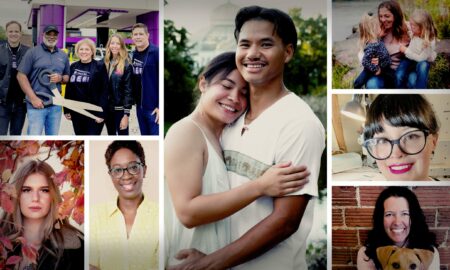

Today we’d like to introduce you to Mark Bluhm.
Mark, we appreciate you taking the time to share your story with us today. Where does your story begin?
A few years ago, my mother-in-law was diagnosed with dementia. As her condition gradually progressed, she began experiencing increasing difficulty managing daily activities—remembering appointments, making phone calls, and understanding her schedule. Although she lived in an assisted living facility, the staff faced high turnover and limited time, making it challenging for them to know each resident personally or provide personalized support.
One winter day, she waited outside in a snowstorm for her son to pick her up—except it was the wrong day. The staff, despite their best intentions, had no way to recognize the mistake or intervene sooner. It was a clear example of the gap between what families assume is happening in care settings and what staff are realistically able to provide.
As a semi-retired technologist, my wife asked whether I could help. I began designing a solution that would allow her mother to maintain autonomy and dignity without needing to learn new technology. The result was a touch-only interface that enables residents to:
• See familiar family photos and people
• Understand their daily schedule at a glance
• Receive reminders and task prompts
• Make phone and video calls simply by touching a picture of the person
• Access important personal and medical information when needed
Care staff can schedule activities for individuals or groups, document care actions, and quickly access critical medical directives. Family members use a companion app to add photos, update schedules, and stay connected in real time, strengthening communication and continuity between home and care environments.
The design principle is simple: the resident should never need to understand technology. The system adapts to them—not the other way around.
This platform creates a meaningful convergence of support among residents, families, and care staff. Above all, it is focused on restoring dignity, safety, and emotional well-being for individuals experiencing cognitive decline. Our goal is to make aging less confusing, less isolating, and more humane.
The product was released officially on September 2, 2025. We have a 3 year roadmap already defined to add new features and make life easier for the families, staff and residents.
I’m sure it wasn’t obstacle-free, but would you say the journey has been fairly smooth so far?
Defining the product and roadmap were not that difficult, but getting facilities willing to help us test has been a challenge. There is significant staff challenges and turnover in facilities and many don’t feel they have time to test new things, even though they can see the benefit of the product. Fortunately, we were able to find a couple that were willing to put in the effort to help us.
The primary screen for the resident is a 27 inch touch screen. We are sourcing these screens from China to keep costs down. Working with Chinese manufacturers has been a challenge, but even more challenging has been the ever changing tariff situation, making it difficult for us to determine how to charge and price things.
Because of this we shifted from a purchase the screen model, to a simple monthly subscription that includes the screen so there is no large upfront cost.
Can you tell our readers more about what you do and what you think sets you apart from others?
I have had a long tenure as a technologist. I was the Chief Architect for Thomson Reuters for many years. I hold several software patents, in search technology, document repositories, and mobile applications.
I am most proud of the products I create with incredible people and seeing those people thrive in their own careers.
What does success mean to you?
We define success as enhancing safety, dignity, and connection for older adults experiencing cognitive decline, while strengthening the support system around them.
On the human level, success means a resident can confidently understand their day, recognize the people in their life, and communicate without fear or frustration. It means they can participate in daily routines independently and feel seen and supported. It also means families feel reassured and emotionally connected, even when they cannot be physically present. For care staff, success means having the information and tools to provide personalized care efficiently and consistently.
From a product perspective, success is achieved when the technology becomes “invisible”—simple enough that the resident does not have to learn anything new. We measure this through:
• Reduced confusion and anxiety for residents
• More frequent communication between residents and family
• Fewer missed appointments, tasks, or medications
• Improved staff workflow and continuity of care
Ultimately, success means creating a care environment where aging is not defined by loss, but by continued connection, clarity, and dignity—supported by thoughtful, intuitive technology designed around the person, not the device.
Pricing:
- 49.95 monthly for a 15 inch screen
- 59.95 monthly for a 27 inch screen
Contact Info:
- Website: http://www.vestaconnect.com
- Instagram: https://www.instagram.com/vestaconnect/
- Facebook: https://www.facebook.com/VestaConnectUS/
- LinkedIn: https://www.linkedin.com/company/vestaconnect















